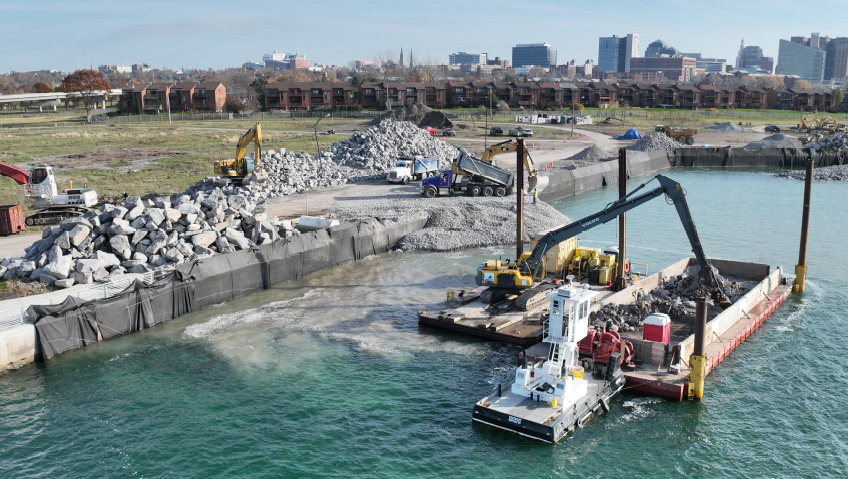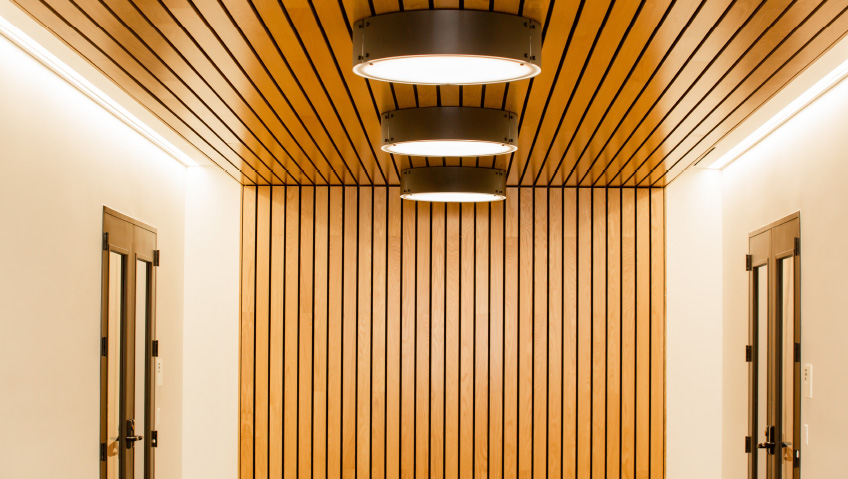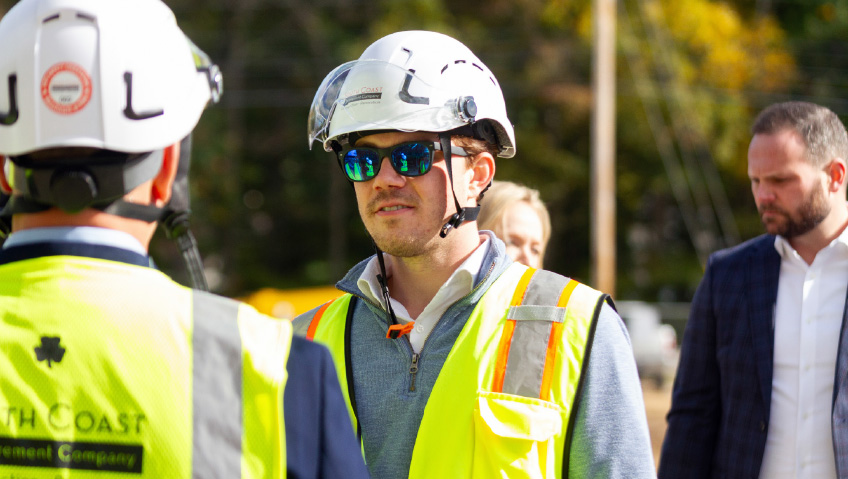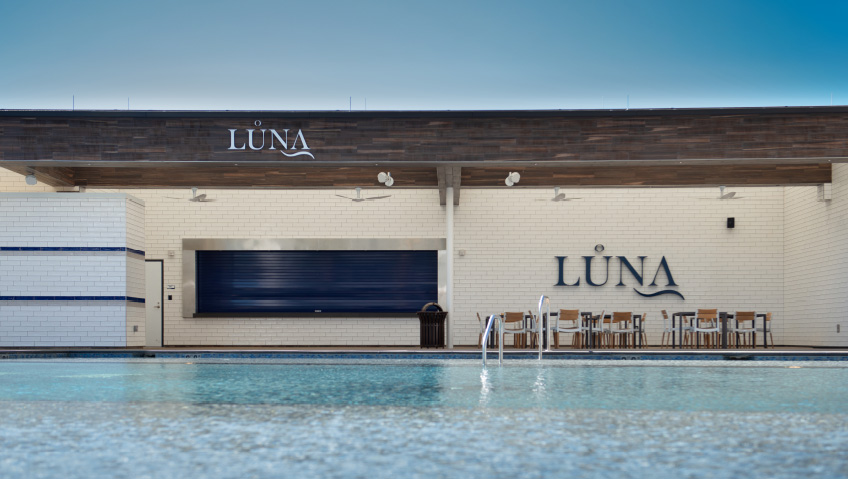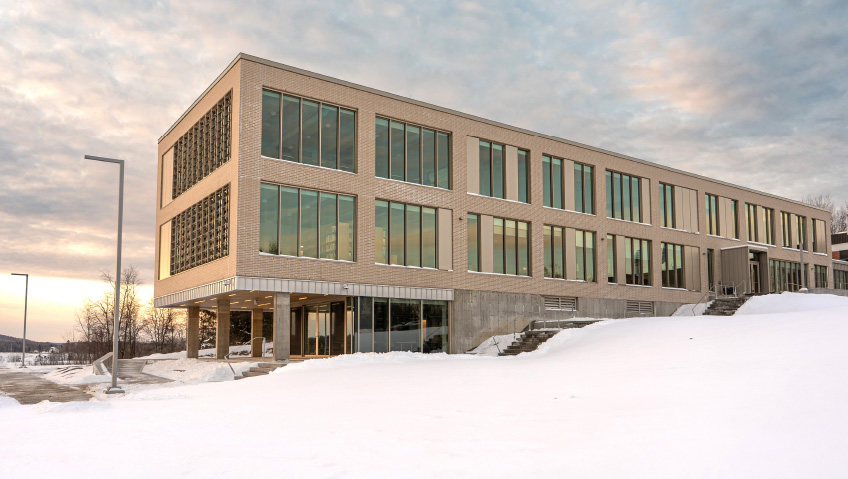Mark Cerrone, Inc. (MCI) is a diversified civil site contractor and construction company serving Western New York. In 2023, it was named Niagara USA Chamber’s Business of the Year, another feather in the cap of this 25-year-old company.
During those 25 years, MCI has been a part of countless projects that have shaped the communities it calls home. From the city of Buffalo’s renaissance to redeveloping the city’s waterfront, these projects test the limits of construction and prove why MCI is best-in-class for safety, quality, and project delivery.
Overcoming adversity
Since its founding in 1999 founder and namesake Mark Cerrone, the company has faced its share of challenges, evolving, diversifying, and finding success in the face of adversity. The firm got its start in the residential sector before breaking into the commercial sector. Sadly, in 2007, the firm lost Mark after a short but valiant battle with cancer. At a crossroads, the company’s leaders stepped up and took over where he’d left off.
Under the ownership and leadership of President George Churakos, who has been with the company since 1999, and Mark’s brother Vincent Cerrone, with the support of Mark’s wife, the company transitioned ownership in 2008 with a renewed commitment to growing its size and impact. Today, the firm boasts three offices, four processing and storage yards, nearly 300 employees, and over one billion dollars in completed projects, making it is one of the fastest growing companies in the state—growth that is backed by a reputation for getting the job done, and doing it right.
Transformative projects
Certainly, construction is challenging, but when it comes to projects—even the most challenging and complex—MCI’s reputation precedes it. The firm is thus often selected to undertake extremely high-profile jobs that have no margin for error. As Churakos jokes, “We never really get the easy jobs.”
Currently, MCI is working on several projects of this caliber, one of which is the Crow’s Nest extension at Niagara Falls State Park, a project that entails construction of new stairs and an overlook structure along the side of the gorge to give visitors a new way to experience the falls while alleviating some of the pedestrian congestion that occurs during the peak season. The stairs will offer a one-way egress from the lower gorge during peak season and two-way flow during the offseason once complete in the summer of 2026.
Given its location along the side of the gorge near the American falls, the project is rife with complexities, from the topography itself to the mist coming off the falls, which creates something of a microclimate. As winter approaches, this will make the experience even more treacherous.
As Churakos explains of the Crow’s Nest project, “We are actually on the side of a gorge building stairs, installing micropiles. We have cranes and people basically 200 to 250 feet down the side of a gorge where we’re creating the trails in the access; this is located right next to the Falls, so we get the wind shift and the mist.”
The idiosyncrasies of nature are also an issue on the Ralph Wilson Centennial Park rehabilitation project, a 100-acre site located at the confluence of the Niagara River and Lake Erie, making it subject to storm and water damage. To mitigate these impacts—which are particularly challenging given the flat topography of the site—MCI has been selected as the trade contractor for the first phase of the project, responsible for remediation, demolition, earthwork, cuts and fills, utilities, and marine work.
To deliver on this project, MCI has pulled out all the stops, including importing a highly specialized piece of equipment from the Netherlands. The 100-ton machine utilizes GPS to carefully place massive boulders along the shoreline, ensuring that they fit tightly and precisely to ensure the area is adequately built up to protect it from inclement weather and the power of the lake itself.
“Centennial Park is a very large shoreline project with extremely difficult waters, winds, and weather that we face pretty much every day,” says Churakos. “We have to put six- to eight-ton boulders in that very lengthy area of shoreline,” a project which will continue through 2025 with an eventual phased-in opening in 2026.
Work is also ongoing for the Erie Canal Harbor District Corporation to improve the overall visitor experience at Buffalo’s Outer Harbor, a seven-acre site between Wilkeson Pointe at the water’s edge and the Fuhrmann Boulevard entrance. MCI has been selected for the first phase of the project, which includes site work such as clearing the existing paved surfaces, establishing site parameters, excavation for site utilities, installation of landscape and fence materials, new surface walkways and driveways, and site enclosures.
Not too far away, the firm is also working on Buffalo Harbor State Park, the only state park in the city of Buffalo, which is home to a 1,100-slip marina, a boat launch, a restaurant, a fish cleaning station, restrooms, and a waterfront playground that is adjacent to the Tifft Nature Preserve. This area is undergoing a significant upgrade which should be completed in time for Memorial Day 2026, work that includes the inclusion of a splash park, art installations, expanded retail and recreational opportunities, and a park office.
Discussing the unique challenges related to the project, Churakos says, “Buffalo Harbor is another unique project that’s introducing something called FGA, a foam glass aggregate, which is a lightweight material to build a subbase that really hasn’t been used in this area. They’re building a very steady art splash pad with features and rocks and other elements on top of an old marine filled-in area.”
Acknowledging that the stability of the ground “isn’t great, per se,” the use of this lightweight material to bring up the grade and create the foundation for these additions is a key element of the design. “We’ve adapted very well to installing this material and working in sequence to build it,” says Churakos of the adaptability and expertise of MCI’s team to get the job done no matter what.
From planning to execution
Planning is a big part of MCI’s success, but so too are safety and quality. These words are not just fodder for the company logo; they are the lifeblood of the company and the strengths upon which its legacy and reputation have been rooted for the last 25 years.
With both in-house and third-party safety efforts, “We maintain the safest of workplaces,” says Churakos. “We practice every day, and everybody goes home in the same way they come in. We have a very experienced and expert team put together, and a technical approach to projects, so we build the right team to complete each project. We also plan these projects out well; we build models and predict challenges in the work in advance of being in the field,” he explains.
This commitment to planning on the front end is why MCI can move through a project with few delays, regardless of the challenges it faces (and there are challenges aplenty). It is also a testament to the talent the company employs.
“Our employees are one of our biggest assets; we have a great team together and I think that’s just something that the company thrives on. We try to work together to keep continuity in the business and the same focus every single day,” says Churakos.
By staying the course, adapting to market ebbs and flows, remaining diverse in both talent and capabilities, and persevering in the face of challenges as it has done since its founding, Mark Cerrone, Inc. continues to reinforce its reputation and legacy, which are sure to serve it well for many more years to come.

